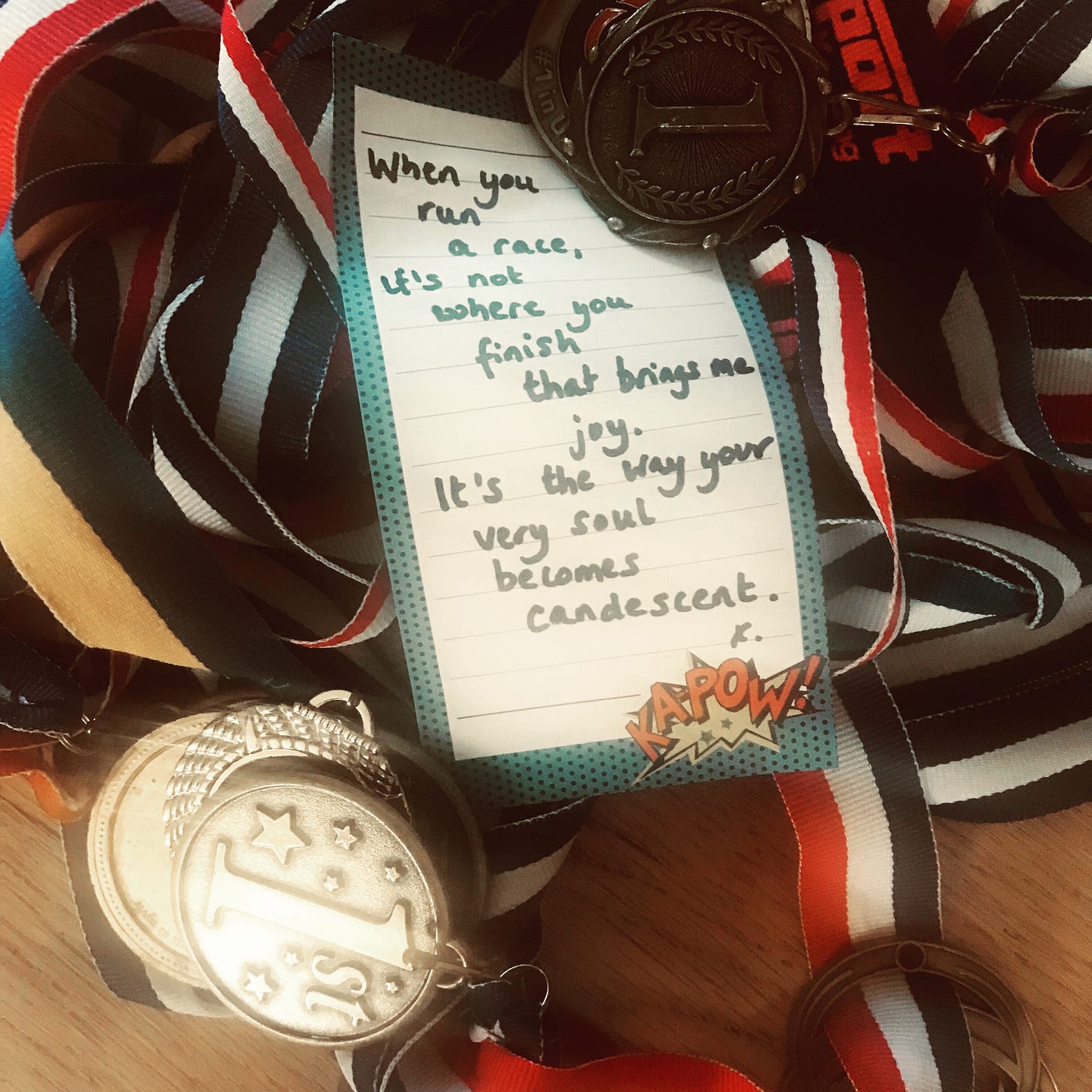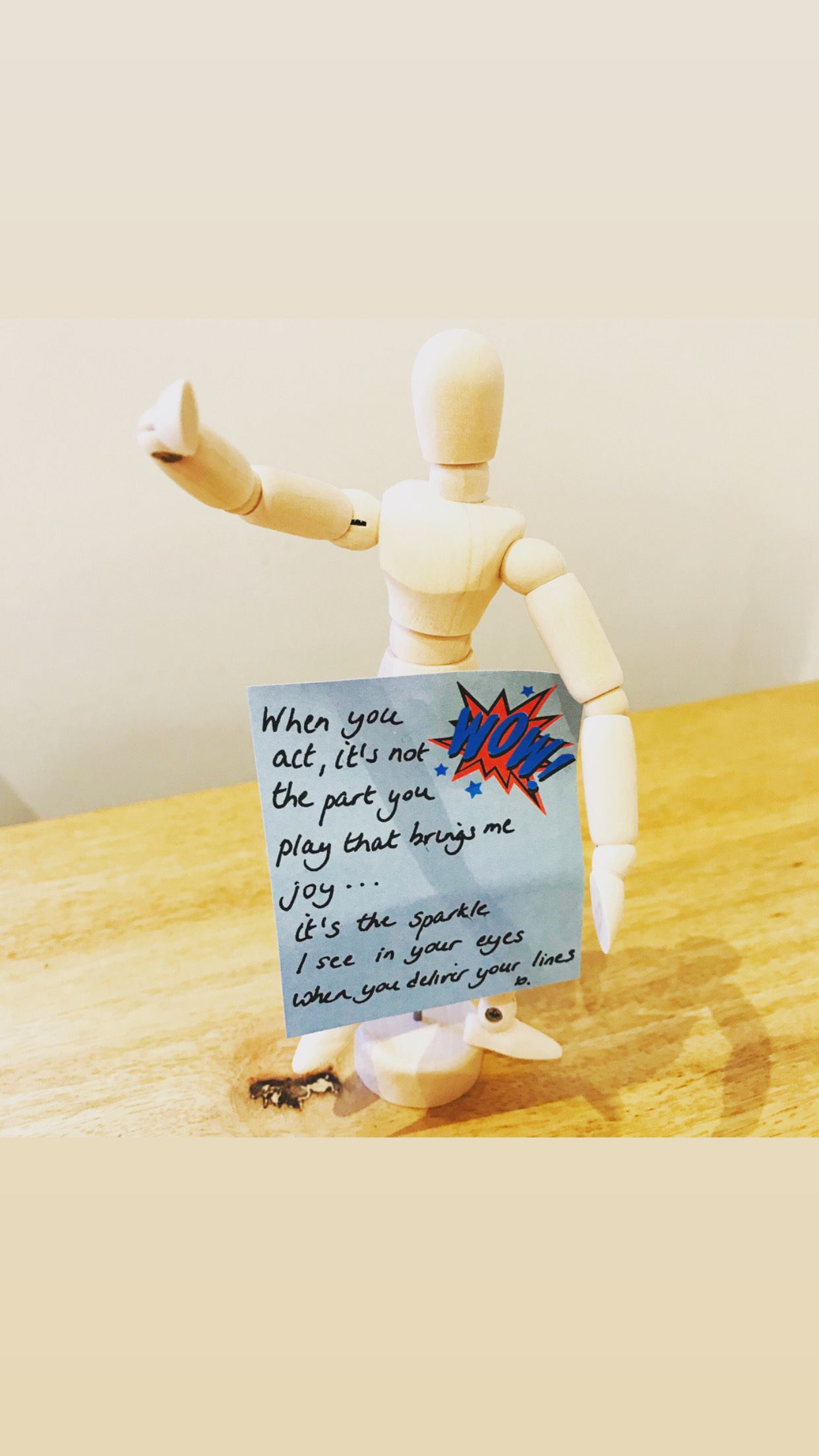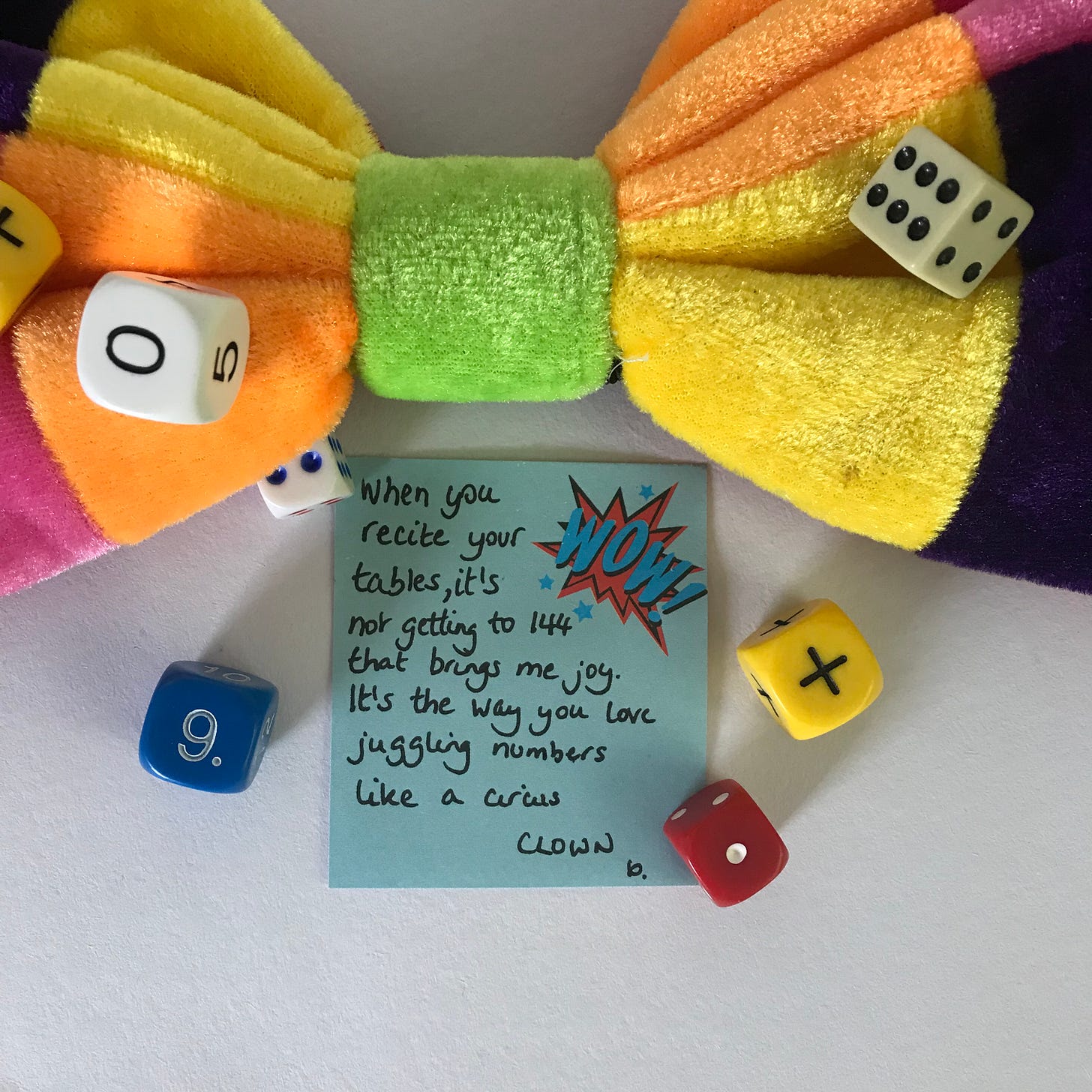At last! Here is a more joyful emotion! I hadn’t heard of freudenfraude until I read Brené Brown’s Atlas of the Heart. It’s a book about feelings; about how to recognise and navigate the whole gamut of feelings that we can have daily because of our experiences.
After surveying over 7000 people Brené found that the average number of emotions people could name was 3 - happy, sad and angry. Of course, there are many more than that and Brené set to work to group them based on how they relate and compare to one another. This is the basis of my ‘Permission to feel’ series. Whilst I really enjoyed reading Brené’s book, I found that it only went so far as labelling the feelings.
As a therapist, I am interested in getting into the granularity of them, so that we can learn and grow from understanding what we are feeling and why. You may have noticed that I match one of my poems to a feeling each week.
Freudenfreude is inspired by the German word for joy and it describes the enjoyment of other’s successes. When I was thinking about linking a poem to this emotion I panicked because I thought, ‘Oh pants, I haven’t written anything about enjoying the success of others.’
Well, it’s true that I haven’t written anything about any of my friends, but I did find these that I wrote about my sons when they were younger. Phew.
I have one son who loves sport, another who lives for acting and dancing and the youngest does maths puzzles for fun (seriously!). I have felt so much joy in watching them love those things, so I wrote these…
When you run a race
It’s not where you finish that brings me joy.
It’s the way
Your very soul
Becomes candescent.
******
When you act
It’s not the part you play
That brings me joy.
It’s the sparkle
I see in your eyes
When you deliver your line.
****
When you recite your tables
It’s not getting to 144
That brings me joy.
It’s the way you love
Juggling numbers
Like a circus clown.
Whereas we feel pride when we or someone we love achieves something, freudenfraude is not about achievement, it’s about enjoyment and celebration in witnessing the pleasure and joy that someone else is experiencing.
When we feel like we are lacking a sense of joy in our own lives, it can be hard to witness and celebrate someone else’s joy. Little drops of bitterness or resentment can attrit relational bonds if we don’t pay attention to them. So how can we practice freudenfraude if it doesn’t come naturally to us?
The first thing that we can do is engage in a daily gratitude practice (yawn). I know, I know, you’ve heard it before, but let me explain why it works.
There is a theoretical model in psychology called the Broaden and Build Theory which was developed by Barbara Fredrickson. Broadly speaking, positive emotions open people’s mind and change how they perceive their environment.1 At the same time, positive emotions help people to build their personal well-being resources, ranging from physical resources, to intellectual resources, and social resources2. In short, the broaden-and-build theory is focused on the positive emotions and the essential role they assume in people’s survival.
Certainly, positive emotions, like love, joy, and gratitude, promote new and creative actions, ideas, and social bonds. When people experience positive emotions, their minds broaden and they open up to novel possibilities and ideas. But there is more, the personal resources gathered during states of positive emotions are durable and can be drawn upon in later moments to preserve people’s wellbeing (like, for example, when your friend has great news and you are trying to summon up some freudenfraude).
Positive emotions are like cash that you can be save up and use later. These emotional savings are the reserve that can be used later in different emotional states. Positive Psychology Interventions (PPIs) not only enhance wellbeing, but also produce a significant reduction of depressive symptoms in people who suffer from depression3.
So what are some of these PPIs?
Or, as I already mentioned, a gratitude practice: You can listen below, or read what to do4:
Close your eyes and think of a person, place, or event you experienced with gratitude during the past 24 hrs or week. The key is to choose an experience that only brought you pleasure, with no negativity attached to it.
Remember the scenario in as much detail as you can.
Notice any colours, smells, sights, what you touched, and
heard.
As you tune in to what you notice, take note of any
sensations you feel in your body as you recall this memory.
Next, focus your attention on these positive sensations and watch what happens to them.
Encourage yourself to locate and amplify any pleasing sensations you feel.
Take time to “map” them vividly, so that you can bring up these sensations at another time when you wish.
When you feel ready, slowly open your eyes and re-orient in the room - look around the room noticing the colour, shape and size of what is around.
As the saying goes, you can’t pour from an empty cup, so doing practices like this will help you to feel buoyant and that will help you to be generous when someone else has good news to share, which will enhance your relationships because people notice that you notice. So really, that’s a win win for all!
I hope you enjoyed a brief introduction into the realms of Positive Psychology and it has inspired you to bring a bit of freudenfraude into your life and the lives of those you love.
That’s it for now!
‘Til next time
Jacky x
Fredrickson, B. L., & Branigan, C. (2005). Positive emotions broaden the scope of attention and thought‐action repertoires. Cognition & emotion, 19(3), 313-332.
Fredrickson, B. L. (2009). Positivity. New York, NY: Crown.
Sin, N. L., & Lyubomirsky, S. (2009). Enhancing well‐being and alleviating depressive symptoms with positive psychology interventions: A practice‐friendly meta‐analysis. Journal of clinical psychology, 65(5), 467-487.
Music from Pixabay by Harumachimusic






